Lesley Tierra
See book keywords and concepts |
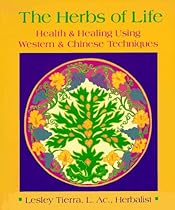 Because herbs contain many vitamins, minerals and other important nutrients, they are a valuable addition to the daily diet. Leafy greens in general aid the assimilation of grains, detoxify the blood, decongest the liver and provide the vitality of chlorophyll to the body.
Potherb
1. Place a steamer basket in pot with a little water in bottom.
2. Wash leaves well, place in steamer basket and cover.
3. Bring to bod, then simmer for 5 minutes.
4. Remove and eat.
Amounts: Stuff the pot full of the greens. Because herbs contain many vitamins, minerals and other important nutrients, they are a valuable addition to the daily diet. Leafy greens in general aid the assimilation of grains, detoxify the blood, decongest the liver and provide the vitality of chlorophyll to the body.
Potherb
1. Place a steamer basket in pot with a little water in bottom.
2. Wash leaves well, place in steamer basket and cover.
3. Bring to bod, then simmer for 5 minutes.
4. Remove and eat.
Amounts: Stuff the pot full of the greens. |
| Parsley is rich in vitamins, iron and minerals and so is a valuable food. Therefore, when it is so often used as a garnish, eat it! Drinking the fresh juice daily (2 tsp) strengthens the kidneys and uterus. |
Stanley W. Jacob, M.D., Ronald M. Lawrence, M.D., Ph.D.
See book keywords and concepts |
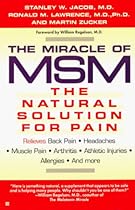 Magnesium and zinc are two leading examples of commonly deficient minerals. Unlike magnesium and zinc, for which there are recognized daily intake standards, no such yardstick exists for sulfur intake.
From a nutritional standpoint, sulfur—like Rodney Danger-field—receives little respect. Although it is clearly necessary for health, sulfur per se is not regarded as an essential nutritional element. The U.S. Magnesium and zinc are two leading examples of commonly deficient minerals. Unlike magnesium and zinc, for which there are recognized daily intake standards, no such yardstick exists for sulfur intake.
From a nutritional standpoint, sulfur—like Rodney Danger-field—receives little respect. Although it is clearly necessary for health, sulfur per se is not regarded as an essential nutritional element. The U.S. |
| It is one of the very few minerals that are combustible.
Four thousand years ago, the Egyptians burned the yellow powder of sulfur to ward off bad spirits. Throughout the ages since, man has put sulfur to varied but history-altering use. The Chinese discovered gunpowder by mixing sulfur and saltpeter, thus opening a new dimension in our ability to kill one another.
In Latin, it was called solferrein, meaning "carrying the sun," a reference to the yellow color of the mineral—a reflection of the sun.
In our modern age, sulfur compounds have made huge economic contributions. |
Elson M. Haas, M.D.
See book keywords and concepts |
 Zinc salts such as gluconate or sulfate are commonly available in 220 mg. tablets or capsules, each providing 55 mg. of elemental zinc. Taking one of these two or three times daily may cause some gastrointestinal irritation, nausea, or diarrhea but is more likely to have positive effects. Excessive supplementation may cause some immune suppression, premature heartbeats, dizziness, drowsiness, increased sweating, muscular incoordination, alcohol intolerance, hallucinations, and anemia, some of which is due to copper deficiency. Zinc salts such as gluconate or sulfate are commonly available in 220 mg. tablets or capsules, each providing 55 mg. of elemental zinc. Taking one of these two or three times daily may cause some gastrointestinal irritation, nausea, or diarrhea but is more likely to have positive effects. Excessive supplementation may cause some immune suppression, premature heartbeats, dizziness, drowsiness, increased sweating, muscular incoordination, alcohol intolerance, hallucinations, and anemia, some of which is due to copper deficiency. |
Susun S. Weed
See book keywords and concepts |
 E. Preparation & Daily Dose: Used without limit, for years. Best to start with 4 ounces/125 ml of infusion daily and increase slowly.
Cooked young plants eaten with broth: as desired.
Dried herb infusion: up to 1 quart/liter. Toxicity: Stomach upset possible from using plants harvested when flowering. Contact with fresh nettles causes a stinging rash. Works Well With: Mint.
Results & Notes: Superb complementary medicinefor women choosing chemotherapy. E. Preparation & Daily Dose: Used without limit, for years. Best to start with 4 ounces/125 ml of infusion daily and increase slowly.
Cooked young plants eaten with broth: as desired.
Dried herb infusion: up to 1 quart/liter. Toxicity: Stomach upset possible from using plants harvested when flowering. Contact with fresh nettles causes a stinging rash. Works Well With: Mint.
Results & Notes: Superb complementary medicinefor women choosing chemotherapy. |
Elson M. Haas, M.D.
See book keywords and concepts |
 These are calcium (1.5 of body weight), phosphorus (1), potassium (0.35), sulfur (0.25), sodium (0.15), chloride (0.15), magnesium (0.05), and silicon (0.05). (Silicon is not often listed as an essential element, though in recent years we have begun to realize its importance.) Most of the calcium and phosphorus is in the bones, but some is also present in the blood and in every cell. Calcium particularly is vital to heart and muscle function and nerve conductivity. The remaining phosphorus and most of the sulfur mix with the four primary elements to form the fats, proteins, and nucleic acids. These are calcium (1.5 of body weight), phosphorus (1), potassium (0.35), sulfur (0.25), sodium (0.15), chloride (0.15), magnesium (0.05), and silicon (0.05). (Silicon is not often listed as an essential element, though in recent years we have begun to realize its importance.) Most of the calcium and phosphorus is in the bones, but some is also present in the blood and in every cell. Calcium particularly is vital to heart and muscle function and nerve conductivity. The remaining phosphorus and most of the sulfur mix with the four primary elements to form the fats, proteins, and nucleic acids. |
Jonathan Goodman ND
See book keywords and concepts |
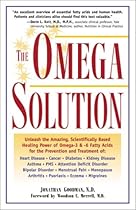 There are many types of kidney disease. I'd like to single out two of the subtypes—Berger's disease and lupus nephritis—because there's some evidence that they may respond to supplementation with EFAs.
Berger's Disease
Let's start with Berger's disease, also called IgA nephropathy (IgAN). The most common form of nondiabetes-related kidney disease, IgAN mainly affects children and young adults, most of them male. The disease is thought to occur when a kidney accumulates unusually large amounts of IgA antibodies, which results in damage to the kidney's filtering system (the glomerulus). There are many types of kidney disease. I'd like to single out two of the subtypes—Berger's disease and lupus nephritis—because there's some evidence that they may respond to supplementation with EFAs.
Berger's Disease
Let's start with Berger's disease, also called IgA nephropathy (IgAN). The most common form of nondiabetes-related kidney disease, IgAN mainly affects children and young adults, most of them male. The disease is thought to occur when a kidney accumulates unusually large amounts of IgA antibodies, which results in damage to the kidney's filtering system (the glomerulus). |
Elson M. Haas, M.D.
See book keywords and concepts |
 Prostate health and testosterone hormone production may also be influenced by zinc. Vitamin C is associated with sperm motility, and male infertility has been related in part to vitamin C deficiency. Besides vitamin C, the bioflavonoids, along with vitamins A and E, and the mineral zinc, are important to healthy mucous membrane tissue and function. L-arginine, an amino acid, is also somehow tied to sperm production. In a study cited by Dr. Sheldon Hendler in The Complete Guide to Anti-Aging Nutrients, 4 grams per day of arginine increased low sperm counts in 80 percent of the men tested. Prostate health and testosterone hormone production may also be influenced by zinc. Vitamin C is associated with sperm motility, and male infertility has been related in part to vitamin C deficiency. Besides vitamin C, the bioflavonoids, along with vitamins A and E, and the mineral zinc, are important to healthy mucous membrane tissue and function. L-arginine, an amino acid, is also somehow tied to sperm production. In a study cited by Dr. Sheldon Hendler in The Complete Guide to Anti-Aging Nutrients, 4 grams per day of arginine increased low sperm counts in 80 percent of the men tested. |
Dr Bernard Jenson and Mark Anderson
See book keywords and concepts |
 Compost gardening [organic gardening] in building up the organic mineral levels of the soil is here justified, and its results explained."
THE ROOTS OF OUR IMMUNITY
To begin to understand the plant's immune system and its design of resistance to disease, picture a plant growing in the soil. Along the roots of the plant grow offshoots called rootlets. Growing on the rootlets are little hair-like fungi called mycorrhiza. Mycorrhiza are fungus, yeast-type substances that are very delicate and potentially quite toxic, similar to the tiny insect that has a concentrated poison. Compost gardening [organic gardening] in building up the organic mineral levels of the soil is here justified, and its results explained."
THE ROOTS OF OUR IMMUNITY
To begin to understand the plant's immune system and its design of resistance to disease, picture a plant growing in the soil. Along the roots of the plant grow offshoots called rootlets. Growing on the rootlets are little hair-like fungi called mycorrhiza. Mycorrhiza are fungus, yeast-type substances that are very delicate and potentially quite toxic, similar to the tiny insect that has a concentrated poison. |
John Heinerman
See book keywords and concepts |
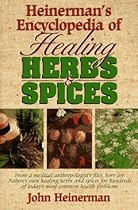 The mixture of active ingredients in aloe is called aloin, and is obtained from the gel in the leaf. It's responsible for the plant's healing properties."
AMARANTH
(Amaranthus hypochondriacus, A. cruentus)
Brief Description
Not a true cereal, but rather a fruit, it belongs to the same family (chenopodium) as the edible weed, lamb's-quarter. Looking like a sesame seed, it has a pleasant, nutty flavor and can be popped like corn or steamed and flattened into a flake. It requires very little water and fertilizer, growing almost anywhere the common weeds do. The mixture of active ingredients in aloe is called aloin, and is obtained from the gel in the leaf. It's responsible for the plant's healing properties."
AMARANTH
(Amaranthus hypochondriacus, A. cruentus)
Brief Description
Not a true cereal, but rather a fruit, it belongs to the same family (chenopodium) as the edible weed, lamb's-quarter. Looking like a sesame seed, it has a pleasant, nutty flavor and can be popped like corn or steamed and flattened into a flake. It requires very little water and fertilizer, growing almost anywhere the common weeds do. |
Elson M. Haas, M.D.
See book keywords and concepts |
 Calcium works with magnesium in its functions in the blood, nerves, muscles, and tissues, particularly in regulating heart and muscle contraction and nerve conduction. Vitamin D is needed for much calcium (and phosphorus) to be absorbed from the digestive tract. Along with parathyroid hormone and calcitonin secreted by the thyroid, vitamin D helps maintain normal blood calcium levels.
Maintaining a balanced blood calcium level is essential to life, especially for cardiac function. A normal blood calcium level is about 10 mg. percent—that is, about 10 mg. per 100 milliliters (ml.) of blood. Calcium works with magnesium in its functions in the blood, nerves, muscles, and tissues, particularly in regulating heart and muscle contraction and nerve conduction. Vitamin D is needed for much calcium (and phosphorus) to be absorbed from the digestive tract. Along with parathyroid hormone and calcitonin secreted by the thyroid, vitamin D helps maintain normal blood calcium levels.
Maintaining a balanced blood calcium level is essential to life, especially for cardiac function. A normal blood calcium level is about 10 mg. percent—that is, about 10 mg. per 100 milliliters (ml.) of blood. |
| Thyroid problems or lead toxicity may cause anemia as well. We also need adequate protein, calcium, and vitamins E and C to keep our red blood cells healthy. Thus, many nutritionally related problems can lead to anemia; decreased production or increased destruction of RBCs and bleeding, however, are the most common causes. Overall, it is wise to diagnose and treat the definitive cause of anemia, not just give iron.
Many symptoms may arise from iron deficiency. |
Susun S. Weed
See book keywords and concepts |
 Preparation & Daily Dose: Used 2 weeks on, 2 weeks off.
Infusion of dried inner bark: up to 1 cup/250 ml, in sips.
Infusion externally: as compress or bath; use as needed. Toxicity: Overuse of tannins-such as drinking 30 or more cups of black tea a day—can cause cancer. Works Well With: Comfrey leaves.
Results & Notes: The tannins in oak bark infusion bind to weeping sores and quickly form a "false skin" which prevents bacterial
Materia ivieaica
281 infections, making this a very important ally for women with severe lymphedema. Oak bark generally prompts a rapid response. Preparation & Daily Dose: Used 2 weeks on, 2 weeks off.
Infusion of dried inner bark: up to 1 cup/250 ml, in sips.
Infusion externally: as compress or bath; use as needed. Toxicity: Overuse of tannins-such as drinking 30 or more cups of black tea a day—can cause cancer. Works Well With: Comfrey leaves.
Results & Notes: The tannins in oak bark infusion bind to weeping sores and quickly form a "false skin" which prevents bacterial
Materia ivieaica
281 infections, making this a very important ally for women with severe lymphedema. Oak bark generally prompts a rapid response. |
Annemarie Colbin
See book keywords and concepts |
 That is, cake and brown rice, both "carbohydrates," were considered virtually interchangeable from a nutritional standpoint. No significant difference was admitted between whole wheat and bleached white flour or between fresh and canned vegetables. As late as 1971, Leo Lutwak, M.D., a physician, professor of clinical nutrition, biochemist, and nutrition consultant to NASA, was publicly quoted as saying, "Nutritionally, it doesn't make any difference whether you eat white, brown, stone-ground, or any other kind of bread."5 Today, we know that such a position is erroneous. That is, cake and brown rice, both "carbohydrates," were considered virtually interchangeable from a nutritional standpoint. No significant difference was admitted between whole wheat and bleached white flour or between fresh and canned vegetables. As late as 1971, Leo Lutwak, M.D., a physician, professor of clinical nutrition, biochemist, and nutrition consultant to NASA, was publicly quoted as saying, "Nutritionally, it doesn't make any difference whether you eat white, brown, stone-ground, or any other kind of bread."5 Today, we know that such a position is erroneous. |
Sharol Tilgner, N.D.
See book keywords and concepts |
 CIRCULATORY STIMULANT
Ginkgo
Ginkgo biloba
20-30%
Ginseng
Panax ginseng
20-30%
Burdock
Arctium lappa
10-15%
Ginger
Zingiber officinalis
10-15%
Prickly ash bark
Zanthoxylum clava-herculis
10-15%
Rosemary
Rosmarinus officinalis
5-10%
Cayenne
Capsicum spp.
2 - 5%
Actions:
This formula increases general circulation of blood to the extremities and promotes venous and capillary integrity. The main action is to increase peripheral circulation. CIRCULATORY STIMULANT
Ginkgo
Ginkgo biloba
20-30%
Ginseng
Panax ginseng
20-30%
Burdock
Arctium lappa
10-15%
Ginger
Zingiber officinalis
10-15%
Prickly ash bark
Zanthoxylum clava-herculis
10-15%
Rosemary
Rosmarinus officinalis
5-10%
Cayenne
Capsicum spp.
2 - 5%
Actions:
This formula increases general circulation of blood to the extremities and promotes venous and capillary integrity. The main action is to increase peripheral circulation. |
Velma J. Keith and Monteen Gordon
See book keywords and concepts |
| Women Only Chapter.)
— good for circulation and the heart.
— used for poultices for tumors.
— the tea is used for a gargle for sore or ulcerated throats, as a wash for wounds, for fevers, coughs, colds and pneumonia.
— if you gather it from the country side, be sure to get it away from highways where it won't be contaminated by exhaust fumes. |
David Brownstein
See book keywords and concepts |
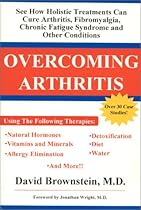 Finally, detoxification of the body is a very important step in the healing process. In an industrialized society, we are exposed to a "mountain" of toxins every day. These toxins include pesticides, heavy metals and hydrocarbons. Exposure to these toxins can cause problems with the immune system, the hormonal system, the neurological system and, in fact, the entire body. I have found elevated toxin levels in many of those who suffer with a chronic illness. Chapter 10 describes how to determine whether you have elevated levels of heavy metals and how to rid your body of these dangerous toxins. Finally, detoxification of the body is a very important step in the healing process. In an industrialized society, we are exposed to a "mountain" of toxins every day. These toxins include pesticides, heavy metals and hydrocarbons. Exposure to these toxins can cause problems with the immune system, the hormonal system, the neurological system and, in fact, the entire body. I have found elevated toxin levels in many of those who suffer with a chronic illness. Chapter 10 describes how to determine whether you have elevated levels of heavy metals and how to rid your body of these dangerous toxins. |
| People do not have to suffer with their illness. There is a way to overcome chronic disease. This book will provide you with a unique holistic approach to overcoming chronic illnesses (arthritis, fibromyalgia, chronic fatigue syndrome and others) and to achieving your optimum health.
Final Thoughts
All of the information presented in this book may seem overwhelming at first. Adopting a holistic approach as outlined in this book, (including eating a healthy diet, drinking adequate amounts of water, etc., |
Velma J. Keith and Monteen Gordon
See book keywords and concepts |
| Japan claim it is preventative of fetus abnormalities. Good during pregnancy because it normalizes glands and hormones and because of its high mineral content.
— helps to prevent growth of tumors.
— cleanses the body of radiation.
— acts as an antibiotic; assists the thyroid in releasing iodine into the blood stream when infection is present. Iodine fights infection. Helps prevent disease. |
| It has been called "liquid sunshine" because it absorbs energy from the sun.
Cleansing & Healing of Chlorophyll
— a great natural healer and cleanser for chronic conditions internally and externally.
— stops growth and development of toxic bacteria. Disease causing bacteria find it difficult to live in the presence of chlorophyll. Counteracts toxins.
— accelerates tissue cell activity and normal re-growth of cells which helps the body heal faster.
— has been used in salves and ointments for external use.
— used as a gargle for tonsils (See Ailments. |
| Has been used in the following:
Antibiotic
Glands, swollen
Mucus
Biliousness or enlarged
Poultice
Bonv enlargements
Goiter
Scrofula from injuries
Growth, abnormal
Sinus
Blood cleanser
Infection
Skin
Breasts, caked
Intestines
Spleen
Breasts, tumors
Itch, tea internally
Syphilis
Bronchitis
Kidney, inflamed
Thyroid
Cancer
Liniment
Weight loss
Colds
Liver
Eczema
Lymphatic System
PSYLLIUM
Psyllium has been called a "colon broom" because it scrubs the colon. It creates bulk and pulls putrefactive toxins from the sides of the intestines and colon. |
Ralph W. Moss PhD
See book keywords and concepts |
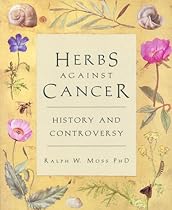 Aloe has a long history of use as an external remedy for irritations, cuts, and burns—perhaps the most important such item in history. On the day that Christopher Columbus set sail for the Indies he wrote in his diary, "All is well, aloe is on board!" (174)
It has been popular as a folk medicine all over the world, including China, Java, Nepal, and Malaya. Its beneficial effect on skin has been known for millennia. In fact, its production is a multi-million dollar industry, especially since it is a common ingredient in lotions and shampoos for the mass market. Aloe has a long history of use as an external remedy for irritations, cuts, and burns—perhaps the most important such item in history. On the day that Christopher Columbus set sail for the Indies he wrote in his diary, "All is well, aloe is on board!" (174)
It has been popular as a folk medicine all over the world, including China, Java, Nepal, and Malaya. Its beneficial effect on skin has been known for millennia. In fact, its production is a multi-million dollar industry, especially since it is a common ingredient in lotions and shampoos for the mass market. |
Schuyler W. Lininger, Jr. DC
See book keywords and concepts |
 Phosphorus is another essential dietary mineral, but it is so abundant in the human diet that deficiencies are virtually unknown and it does not need to be included in an MVM formula. Many essential nutrients for which RDAs have not been established should also be included in ranges considered to be adequate and safe. These would include biotin (p. 272) (30-100 meg per day), pantothenic acid (p. 340) (4 to 7 mg per day), copper (p. 285) (1.5 to 3.0 mg per day), manganese (p. 311) (2 to 5 mg per day), chromium (p. 282) (50 to 200 meg per day), and molybdenum (p. 314) (75 to 250 meg per day). Phosphorus is another essential dietary mineral, but it is so abundant in the human diet that deficiencies are virtually unknown and it does not need to be included in an MVM formula. Many essential nutrients for which RDAs have not been established should also be included in ranges considered to be adequate and safe. These would include biotin (p. 272) (30-100 meg per day), pantothenic acid (p. 340) (4 to 7 mg per day), copper (p. 285) (1.5 to 3.0 mg per day), manganese (p. 311) (2 to 5 mg per day), chromium (p. 282) (50 to 200 meg per day), and molybdenum (p. 314) (75 to 250 meg per day). |
Prevention Magazine
See book keywords and concepts |
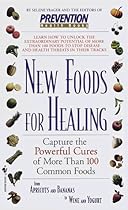 Dr. Eskin.
Help for Digestion
One of the most valuable aspects of buckwheat is its ability to help control blood sugar levels in people with adult-onset diabetes, the most common form of the disease.
The carbohydrates in buckwheat, amylose and amylopectin, are digested more slowly than other types of carbohydrates. This causes blood sugar levels to rise more evenly. While this is good for everyone, it's especially important for those with diabetes, whose blood sugar levels tend to rise steeply and stay high too long. Dr. Eskin.
Help for Digestion
One of the most valuable aspects of buckwheat is its ability to help control blood sugar levels in people with adult-onset diabetes, the most common form of the disease.
The carbohydrates in buckwheat, amylose and amylopectin, are digested more slowly than other types of carbohydrates. This causes blood sugar levels to rise more evenly. While this is good for everyone, it's especially important for those with diabetes, whose blood sugar levels tend to rise steeply and stay high too long. |
Francois Couplan, Ph.D.
See book keywords and concepts |
 The plant has been used as a sedative, a weight reducer for obesity and in the treatment of epilepsy.
Paeoniaceae
Paeonia (G 4) Peony
After Paeon, mythological physician who used the plant to heal the wound that Hercules inflicted upon Pluto. W. N.Am.
A Eurasian (P. officinalis) and a Chinese (P. suffructicosa) species are planted for ornament.
The roots of P. brownii have reportedly been eaten by California Indians. They are said to taste somewhat like licorice.
The roots of some Asian peonies are locally used as food.
The flowers of P. suffruticosa, tree peony (m.a.) - cultivated in N. The plant has been used as a sedative, a weight reducer for obesity and in the treatment of epilepsy.
Paeoniaceae
Paeonia (G 4) Peony
After Paeon, mythological physician who used the plant to heal the wound that Hercules inflicted upon Pluto. W. N.Am.
A Eurasian (P. officinalis) and a Chinese (P. suffructicosa) species are planted for ornament.
The roots of P. brownii have reportedly been eaten by California Indians. They are said to taste somewhat like licorice.
The roots of some Asian peonies are locally used as food.
The flowers of P. suffruticosa, tree peony (m.a.) - cultivated in N. |
Glenn W. Geelhoed, M.D. and Jean Barilla, M.S.
See book keywords and concepts |
 With all this goodness, it's no wonder pollen has been called nature's most prefect food.
Many athletes take pollen to boost strength and endurance during intense competition. Even athletes that many people would consider to be "past their prime" have used pollen to boost their strength beyond that of most young athletes. Seniors like Harry Sittonen and Noel Johnson take bee pollen every day with amazing results. With all this goodness, it's no wonder pollen has been called nature's most prefect food.
Many athletes take pollen to boost strength and endurance during intense competition. Even athletes that many people would consider to be "past their prime" have used pollen to boost their strength beyond that of most young athletes. Seniors like Harry Sittonen and Noel Johnson take bee pollen every day with amazing results. |
Ralph Golan, M.D.
See book keywords and concepts |
 Take extra niacin and chromium. Use the no-flush form of niacin, inositol hexaniacinate (up to 600 milligrams three times a day—see Chapter Six for precautions), and chromium (300 micrograms three times a day).
• The amino acid derivatives N-acetylcysteine (500 milligrams two or three times a day) and L-carnitine (300 milligrams two or three times a day) can also favorably affect cholesterol ratios.
• If you have a history of recurrent or prolonged antibiotics or bowel disturbances related to elevated choles-terols, take acidophilus and bifidus (at least one capsule twice a day). Take extra niacin and chromium. Use the no-flush form of niacin, inositol hexaniacinate (up to 600 milligrams three times a day—see Chapter Six for precautions), and chromium (300 micrograms three times a day).
• The amino acid derivatives N-acetylcysteine (500 milligrams two or three times a day) and L-carnitine (300 milligrams two or three times a day) can also favorably affect cholesterol ratios.
• If you have a history of recurrent or prolonged antibiotics or bowel disturbances related to elevated choles-terols, take acidophilus and bifidus (at least one capsule twice a day). |
| Arachidonic Acid
Gamma-
Dihomogamma
¦»(PGTj) (Favorable)
Linoleic Acid omega-6 oils
Alpha-
Linolenic
Acid omega
-3 oils x—
4-
1 r
_ (Unfavorable 1 blockers (prevent the formation of PGE-1 and PGE-3 and accentuate the production or relative percentage of PGE-2
Required Nutritional/ Biochemical Cofactors: Vitamins B-3, B-6, C. |
Lendon H. Smith, M.D.
See book keywords and concepts |
| The hematocrit, hemoglobin, and RBC are high enough to rule out anemia as a cause of fatigue. Note in the far right column more than half the elements are negative, i.e., below the mean; she is nutrient-deficient. Her sodium, calcium, total protein, albumin, iron, GGT (magnesium), and nitrogen elements (BUN, uric acid, creatinine) are all low enough to explain her low blood pressure and fatigue. Nutrients are not getting to her brain to help her think.
The electrolytes (see Table 14.3) are off enough to explain her truncated circulation; she may not be getting enough blood to her brain. |












